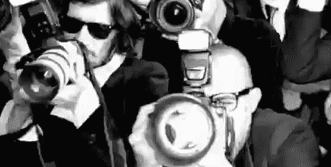How to manage a sloth (and other animals in the Process Zoo)

Learn how to identify, and manage, the different process animals that make up your organisation, and find out about the damage that may be going unnoticed if they are left to their own devices
Guest bloggers Tim Hodgetts, Chris Gibson and Pete MahoneyAre you ever frustrated by those who you work with being obsessed with process? OK, silly question. How recently was your blood driven to the boil by a fixation on ‘doing it the right way’ at the expense of ‘doing the right thing’ or, more worryingly, not getting the job done at all?
When process is perceived as more important than progress then you are in a Process Zoo.
Any visitor to a zoo will observe the variable characteristics of its animal inhabitants. And so it is in the Process Zoo where you will find a sheep, a monkey, a sloth and a porcupine. Their behaviours are a combination of “active or passive” and “benign or malignant”.
Understanding these types and their predictable behaviours may not only help you manage your blood pressure, but also consider the strategies for influencing a more enabling, outcome-focused approach to the problem at hand.
MEET THE ANIMALS

The Sheep. This animal doesn’t know any better. The sheep blindly follows process because it is in their terms of reference. There is neither vision nor resistance, only passive compliance.
Challenging the sheep will only induce anxiety and bleating to alert their keeper of a predator of process in the pen.
Try gentle coercion to lead the sheep in an alternate direction. Better still, take steps to change the size and shape of their pen through influencing their keeper.

The Monkey. The monkey lives for process: it is their raison d’être and they are happy in their job. Within the benign spectrum the monkey will enthuse others with their love of process; but towards the malignant spectrum they will assert the imperative to follow process over their subordinates with the passion a mother defends her young.
If challenged, the monkey will be bewildered, defensive or even angry. Why does everybody not want to think in a rigidly linear way where progress to point B is impossible before all regulations have been fully complied with at point A?
Indeed, getting to point B is not really relevant to the monkey; what matters is being able to show the diligence of active adherence to the process. There is, after all, a reason for rules. They must be followed without question—and this gives great satisfaction.
The monkey is an intelligent animal. It has learned this behaviour because it is rewarded through promotion within the hierarchy of the social system that it inhabits.
Try tossing the monkey a banana for enticement—can it be persuaded by logic of the imperative to rapidly achieve the objective and to accelerate, modify or even circumvent the process? Or does it need special attention and reward to be arranged from their keeper to encourage an alternative behaviour?

The Sloth. This is a passive-aggressive animal with a behaviour that is manifestly malignant. Fundamentally, the sloth uses process as an excuse to slow the workload to their own manageable pace.
The sloth is a fastidious and deliberate animal, although is lacking in emotional intelligence: they are oblivious to the time pressure that other animals are suffering and the impact their actions have on task completion for the organisation as a whole.
Sloth-like behaviour may equally be adopted by those with a fear of discovery they lack the competencies for their assigned role. When an animal is weak or vulnerable it moves slowly so as not to draw attention to itself. Over time, however, it is necessary to search out those animals that are moving so slowly they are inhibiting the progress of the organisation.
A challenge to the fastidious sloth may simply be ignored: there is a process to follow that takes a prescribed time and there are no shortcuts, irrespective of the importance of the output. But you can be pleasantly surprised by a short burst of accelerated activity before reverting to the standard pace, if the true benefits can be communicated and understood.
Challenge to the frightened or inept who are using sloth tactics to hide in the organisation will initially be met with denial or obfuscation. “No, your message has not been received, please send it again”; “Sorry, your message cannot be found, please send it again”.
Repeated challenge in this circumstance will be regarded as a threat and may precipitate skunk-like behaviour as a final defence. Claims of bullying are sprayed at those posing the threat, which predictably results in an adherent unpleasant smell that is difficult to remove.
Dealing with the sloth is difficult. They have found the natural environment in which they are comfortable and where it is realistic to hide, inaccessible to others in the higher branches or secluded parts of the organisation; probably in a pack of like-minded individuals; and poorly visible behind a canopy of technical language and processes that nobody else understands (and as indicated, they may not even understand themselves).
Don’t bother visiting this part of the zoo unless there is a compelling need as the lack of activity is frustrating. If you do feel you have to see the sloths, go early and rattle the bars of the cage to encourage them to move. Then go back a bit later and do it again. Position yourself to avoid being hit by any skunk-like response.

The Porcupine. The porcupine is the most dangerous animal in the zoo. It is an intelligent animal, but it is inherently lazy and can see that any challenge to the status quo will result in new and unwanted work. It has therefore learned to weaponise process.
At the slightest agitation the porcupine will retreat into a defensive position and throw out a barrage of process spines. “No, you cannot take that initiative or creative step, you must follow this impenetrable or illogical process instead”.
The process may add little or no ultimate value, and indeed may disrupt or delay the initiative to the point of failure. But following the steps will justify the porcupine’s existence because the porcupine is the defender of the cautious; the porcupine ensures the organisation takes no risk and protects against change; and the porcupine’s pre-historic persona confirms how it will endure even if the organisation fails through a lack of adaptability.
FAMOUS VISITORS
If Kurt von Hammerstein, General of the German army between the Great Wars, were to visit the zoo he would have something to say about all of the animals. He categorised his staff officers as variably lazy, diligent, stupid or intelligent. When these categories are applied to the animals it reveals some further insights:
- The sheep are stupid and diligent: they must have careful supervision or they can disrupt the organisation with their constant stream of well-meaning but poorly informed outputs
- The monkeys are intelligent and diligent: they uphold the values of a process-driven organisation and are the most likely to be promoted, ensuring the culture remains dominant
- The sloths are both stupid and lazy, but still clever enough to use the prevailing culture to create their environment where procrastination, obfuscation and deflection are acceptable or only weakly challenged practices
- The porcupines, being intelligent and lazy, have the greatest promise. They have the spare intellectual capacity to solve complex problems and therefore to provide inspiring leadership. It is disappointing that this capacity may only be used to generate further process efficiencies that support their preferred behaviour
If Henry Ford were to visit the zoo he would comment on the porcupine, as he noted that success is most likely to be achieved “…by lazy people trying to find the easy way to do the same job”. So success, at least in terms of process efficiency, can be achieved by the porcupine if they can be convinced it is in their interests. But the porcupine will never transform the organisation. Without vision and an acceptance of risk the organisation cannot progress from good to great.
ARE YOU A KEEPER?
As you read the description of the animals you will no doubt relate them to people, or whole departments, you know and work with. The next question is how you relate to these animals. Are you a keeper and if so, what kind of a keeper are you?

Feeder. Do you simply feed the process beast? Do you acquiesce to the endless organisational demand to manage process in exchange for an easy life and to be seen to fit into the prevailing culture?

Shoveller. Are you the recipient of the product of the process beast, moving it from one pile to another, without adding value? Perhaps there is a large pile of product in one part of the organisation that most of the workers routinely ignore as they do not see the relevance to their daily jobs? Only when there is an extraordinary event to be investigated do the workers have to dig through the pile to find the reference to the mandated process.

Vet. Perhaps you are charged with keeping a sick process beast alive and may need to be reminded that you are empowered to alleviate suffering and, where appropriate, to terminate the life of the process.

Head Keeper. It may be your responsibility to manage the zoo to influence the expectations of the keepers, the behaviours of the animals and the experience of the visitors.
A SUCCESSFUL ZOO
While the animals may be held captive by the organisation they do not have to feel trapped.
The Head Keeper can make the purpose of the organisation clear—that it is about doing the right thing, not just being seen by others to act in an expected way.
The insightful Head Keeper can remove the cages and open the gates, thereby removing the institutional barriers to cooperation between the species. There may be losses in doing this. Animals who cannot cope with the new freedom, or are fearful of confrontation, will seek shelter elsewhere.
But the main attractions will become those with a clear sense of vision and a track record of building organisational reputation through transformational change and successful delivery—and others outside the organisation who value this will find their way in.
Tim Hodgetts is a professor of emergency medicine and holds a Phd from City of London University. He obtained his MBA through The Open University
Peter Mahoney is an army consultant anaesthetist and Emeritus Defence Professor. He obtained his MBA ( Exec) from Nottingham University Business School
Chris Gibson is a medical manager. He obtained his MBA from Northampton University Business School

Press & Media Enquiries
For more information or to request interviews, contact CMI's Press Team on 020 7421 2705 or email press.office@managers.org.uk


